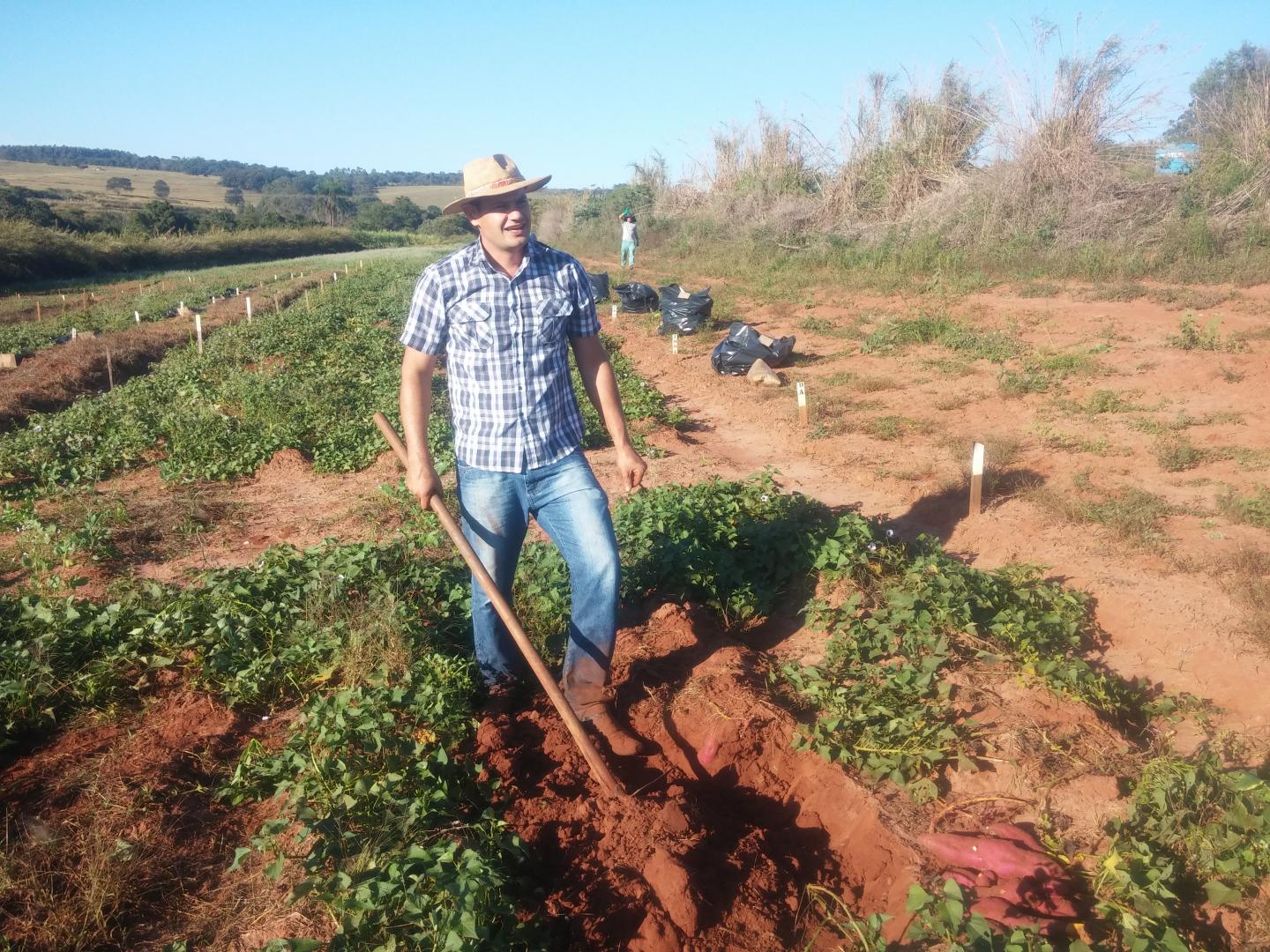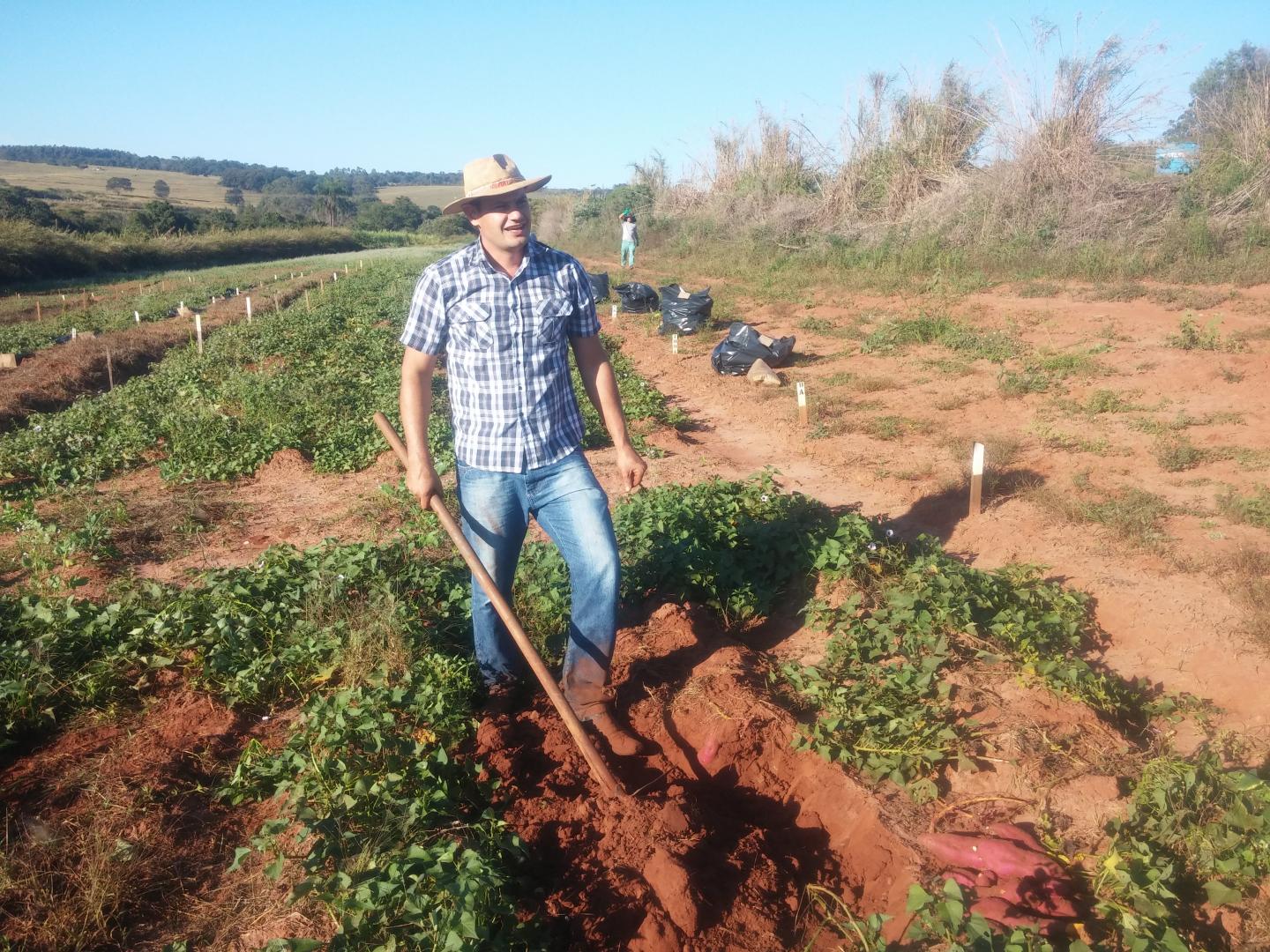
Credit: Elder C. Mattos
Some relationships can be complicated. Take the one between sweet potato crops and soil nitrogen, for example.
Too little nitrogen and sweet potato plants don't grow well and have low yields. Too much nitrogen, however, boosts the growth of leaves and branches at the expense of storage roots. That also leads to low yields.
"Carefully managing soil nitrogen levels is essential to obtain high yields from sweet potato crops," says Adalton Fernandes, an agronomist at the Center for Tropical Roots and Starches at São Paulo State University in Brazil.
Fernandes is the lead author of a new study that determined how much nitrogen is needed to maximize yields from sweet potato crops in Brazil.
The researchers discovered field history matters when trying to apply the optimal amount of nitrogen for sweet potato crops. Cover crops grown in the same plots prior to sweet potato crops affected how much nitrogen was needed.
Sweet potato plants grown in plots previously used to grow legume cover crops needed 35% less nitrogen fertilizer. Growing sweet potatoes after a cereal cover crop, however, was no different than growing them in a plot that had previously just had weeds.
"We show that growing legume cover crops, and incorporating them into the soil as they flower, is a simple technique that can reduce how much mineral nitrogen needs to be applied for sweet potato farming," says Fernandes.
Cover crops are often grown cyclically with economic or cash crops. They may be incorporated into the soil as green manure. They may also be left on the surface as living mulches.
Different cover crops bring different benefits to the growing relationship. Legumes, for example, can increase soil nitrogen levels. Beneficial bacteria in their root nodules pull atmospheric nitrogen into the soil. But they also decompose faster than cereal cover crops once terminated.
"That releases nitrogen into the soil earlier during the sweet potato growth cycle," says Fernandes. "We needed to know more about how different cover crops affect soil nitrogen availability for subsequent sweet potato crops."
Fernandes and colleagues used a study site in southeastern Brazil. The site is a good match for the tropical conditions and sandy soil typical of several areas where sweet potato is grown in Brazil.
In different plots, the researchers grew either one of two legume crops, a cereal crop, or allowed weeds to grow from seeds already present in the soil. When the legume and cereal cover crops were flowering, they were terminated. The plants were incorporated into the soil.
Subsequently, the researchers planted sweet potato in the plots. They tested how much nitrogen was needed to maximize yields.
When sweet potato was grown after legume cover crops, they needed about 110 pounds of nitrogen per hectare (roughly the size of a baseball field) for optimal yields. In contrast, sweet potato crops needed more than 168 pounds per hectare of nitrogen when grown after a cereal cover crop or after weeds.
"We show that there is no reason to use a cereal cover crop prior to sweet potato cultivation," says Fernandes.
Currently, recommendations of how much nitrogen fertilizer to use with sweet potato crops do not consider the history of cultivation in the area. That can result in farmers using more or less fertilizer than needed.
"We now better understand how much nitrogen is needed to maximize sweet potato yields in tropical regions," says Fernandes. "This will help manage the application of mineral nitrogen fertilizers during sweet potato cultivation."
In addition to maximizing yields, using less fertilizer also reduces costs for farmers. That's especially important in Brazil. Much of the sweet potato crop is grown on family farms with low technology use.
Fernandes is now pairing other species of legumes as cover crops. He is testing whether they may be more efficient at providing nitrogen for sweet potato crops. He is also exploring whether combining legumes and cereals as cover crops in the same area can provide different benefits to sweet potato farmers.
###
Read more about this research in Agronomy Journal. This research was funded by the São Paulo Research Foundation (FAPESP) and the National Council for Scientific and Technological Development (CNPq).
Media Contact
Susan Fisk
[email protected]
608-273-8091
@ASA_CSSA_SSSA
http://www.agronomy.org
Related Journal Article
http://dx.doi.org/10.2134/agronj2017.12.0721





